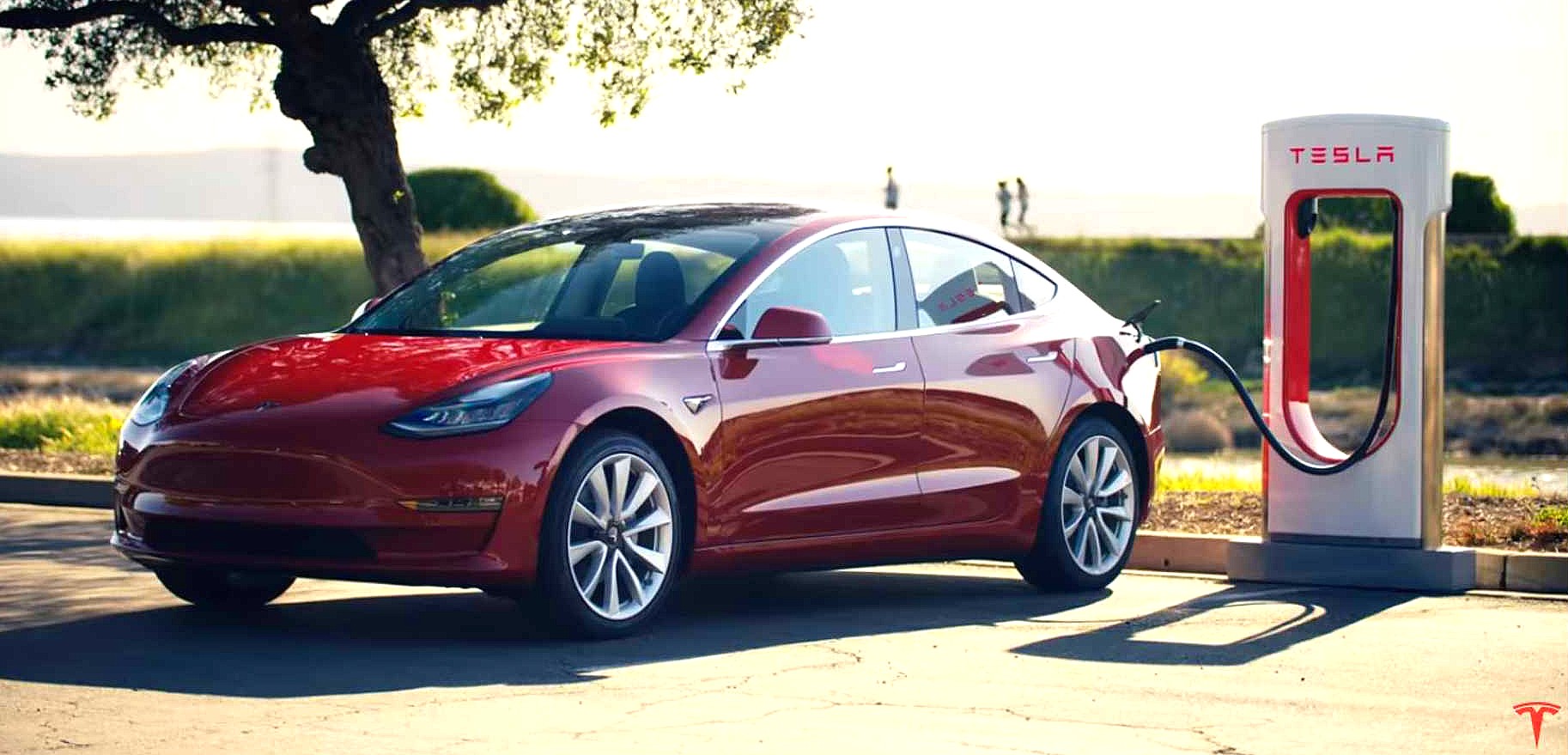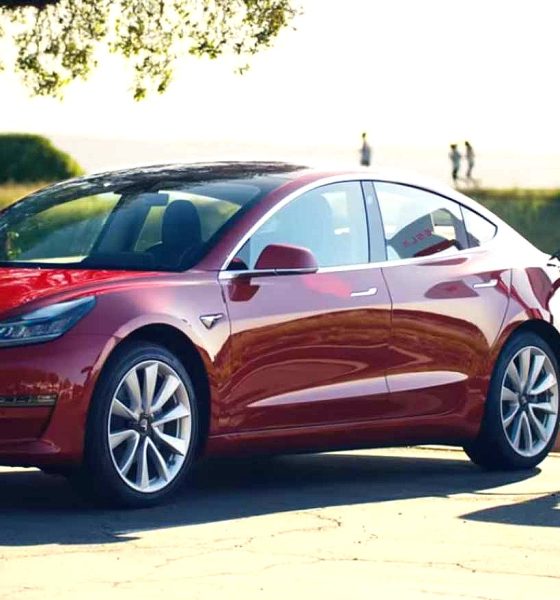

News
Tesla Superchargers are now over 3x cheaper than their biggest competitor
Tesla’s Supercharger Network just undercut one of its biggest competitors by over three times, and the company did not even have to lower its prices. In a recent announcement, IONITY, the rapid charging network that is considered as VW, BMW, Daimler, and Ford’s answer to the Tesla Superchargers, revealed that it would be updating its pricing structure by the end of the month — and what an update it is.
In a press release, IONITY stated that it would be launching a kilowatt-hour-based pricing scheme for customers across its established pan-European network starting January 31, 2020. The new rate is simple, with the company charging customers per kWh. The only issue is that IONITY will be charging electric car drivers 0.79 EUR ($0.88) per kWh.
That’s a substantial premium compared to the Tesla Supercharging Network, which has a rate of about 0.25 EUR ($0.28) per kWh. Thus, with this new pricing structure in place, an Audi e-tron or Porsche Taycan owner would end up paying about $80 to charge the all-electric SUV from zero to 100%. Considering that these vehicles are capable of traveling just over 200 miles on a charge, IONITY’s updated prices will make long trips on electric cars far more expensive than before.
IONITY boss Michael Hajesch, for one, noted that he does not think the new pricing strategy will turn customers away from using the network. In an interview with Handelsblatt‘s EV publication Edison Media, the IONITY executive explained that the rapid charging network’s advantages would likely be worth it for electric car drivers.
“I don’t have that fear. It is important to mention that the connected mobility service providers – and in this case, also include the Porsche charging service and BMW ChargeNow – offer attractive end customer offers. Direct customers without a contract benefit from the IONITY service promise, such as high availability, a Europe-wide HPC charging network, top locations directly on the motorway, and responsible operation of the charging stations with green electricity.”
He also argued that such price adjustments would likely not deter the advent of electric mobility. While he admitted that IONITY’s new pricing is high compared to its rivals in the market, Hajesch stated that the decision to raise the network’s prices was not difficult at all, even among its owners, VW, BMW, and Daimler.
“The discussion was not fierce or difficult at all. The price will not deter customers from buying, on the contrary. The overall service promise of the European IONITY HPC network already gives an answer to the key criticisms of the past regarding availability, charging power, green electricity supply, and range anxiety. We are therefore convinced that we are making a significant contribution to the market acceptance of electromobility.
“The purchase decision will not only depend on the IONITY price point on the long-haul route, which only accounts for five to ten percent of the annual charging needs. You also have to take into account the other use cases at home/work and public charging, which can already result in advantages over diesel and gasoline,” he said.
Despite the IONITY boss’ arguments, the fact remains that EV owners now need to pay far more to charge their vehicles using the rapid charging network. This will likely deter electric car owners who are budget conscious, and it might very well incentivize the ownership of internal combustion cars once more. After all, why buy an Audi e-tron that takes about $80 to fill up when a comparable gas or diesel-powered SUV can fill up for far less?
That being said, this update in IONITY’s pricing also highlights the practicality of Tesla’s Supercharger Network, which charges about $0.28 per kWh. Tesla’s Superchargers currently top out at 250 kW, which is less than IONITY’s peak of 350 kW, but considering the price difference, electric car owners will likely take the slightly slower charging speed and be charged a rate that is several times more affordable.
It’s unfortunate, but for now, at least, it appears that the only rapid charging network that is seriously going for petrol’s jugular is Tesla and is Superchargers.

News
Tesla aims to combat common Full Self-Driving problem with new patent
Tesla writes in the patent that its autonomous and semi-autonomous vehicles are heavily reliant on camera systems to navigate and interact with their environment.

Tesla is aiming to combat a common Full Self-Driving problem with a new patent.
One issue with Tesla’s vision-based approach is that sunlight glare can become a troublesome element of everyday travel. Full Self-Driving is certainly an amazing technology, but there are still things Tesla is aiming to figure out with its development.
Unfortunately, it is extremely difficult to get around this issue, and even humans need ways to combat it when they’re driving, as we commonly use sunglasses or sun visors to give us better visibility.
Cameras obviously do not have these ways to fight sunglare, but a new patent Tesla recently had published aims to fight this through a “glare shield.”
Tesla writes in the patent that its autonomous and semi-autonomous vehicles are heavily reliant on camera systems to navigate and interact with their environment.

The ability to see surroundings is crucial for accurate performance, and glare is one element of interference that has yet to be confronted.
Tesla described the patent, which will utilize “a textured surface composed of an array of micro-cones, or cone-shaped formations, which serve to scatter incident light in various directions, thereby reducing glare and improving camera vision.”

The patent was first spotted by Not a Tesla App.
The design of the micro-cones is the first element of the puzzle to fight the excess glare. The patent says they are “optimized in size, angle, and orientation to minimize Total Hemispherical Reflectance (THR) and reflection penalty, enhancing the camera’s ability to accurately interpret visual data.”
Additionally, there is an electromechanical system for dynamic orientation adjustment, which will allow the micro-cones to move based on the angle of external light sources.
This is not the only thing Tesla is mulling to resolve issues with sunlight glare, as it has also worked on two other ways to combat the problem. One thing the company has discussed is a direct photon count.
CEO Elon Musk said during the Q2 Earnings Call:
“We use an approach which is direct photon count. When you see a processed image, so the image that goes from the sort of photon counter — the silicon photon counter — that then goes through a digital signal processor or image signal processor, that’s normally what happens. And then the image that you see looks all washed out, because if you point the camera at the sun, the post-processing of the photon counting washes things out.”
Future Hardware iterations, like Hardware 5 and Hardware 6, could also integrate better solutions for the sunglare issue, such as neutral density filters or heated lenses, aiming to solve glare more effectively.
Elon Musk
Delaware Supreme Court reinstates Elon Musk’s 2018 Tesla CEO pay package
The unanimous decision criticized the prior total rescission as “improper and inequitable,” arguing that it left Musk uncompensated for six years of transformative leadership at Tesla.

The Delaware Supreme Court has overturned a lower court ruling, reinstating Elon Musk’s 2018 compensation package originally valued at $56 billion but now worth approximately $139 billion due to Tesla’s soaring stock price.
The unanimous decision criticized the prior total rescission as “improper and inequitable,” arguing that it left Musk uncompensated for six years of transformative leadership at Tesla. Musk quickly celebrated the outcome on X, stating that he felt “vindicated.” He also shared his gratitude to TSLA shareholders.
Delaware Supreme Court makes a decision
In a 49-page ruling Friday, the Delaware Supreme Court reversed Chancellor Kathaleen McCormick’s 2024 decision that voided the 2018 package over alleged board conflicts and inadequate shareholder disclosures. The high court acknowledged varying views on liability but agreed rescission was excessive, stating it “leaves Musk uncompensated for his time and efforts over a period of six years.”
The 2018 plan granted Musk options on about 304 million shares upon hitting aggressive milestones, all of which were achieved ahead of time. Shareholders overwhelmingly approved it initially in 2018 and ratified it once again in 2024 after the Delaware lower court struck it down. The case against Musk’s 2018 pay package was filed by plaintiff Richard Tornetta, who held just nine shares when the compensation plan was approved.
A hard-fought victory
As noted in a Reuters report, Tesla’s win avoids a potential $26 billion earnings hit from replacing the award at current prices. Tesla, now Texas-incorporated, had hedged with interim plans, including a November 2025 shareholder-approved package potentially worth $878 billion tied to Robotaxi and Optimus goals and other extremely aggressive operational milestones.
The saga surrounding Elon Musk’s 2018 pay package ultimately damaged Delaware’s corporate appeal, prompting a number of high-profile firms, such as Dropbox, Roblox, Trade Desk, and Coinbase, to follow Tesla’s exodus out of the state. What added more fuel to the issue was the fact that Tornetta’s legal team, following the lower court’s 2024 decision, demanded a fee request of more than $5.1 billion worth of TSLA stock, which was equal to an hourly rate of over $200,000.
Delaware Supreme Court Elon Musk 2018 Pay Package by Simon Alvarez
News
Tesla Cybercab tests are going on overdrive with production-ready units
Tesla is ramping its real-world tests of the Cybercab, with multiple sightings of the vehicle being reported across social media this week.

Tesla is ramping its real-world tests of the Cybercab, with multiple sightings of the autonomous two-seater being reported across social media this week. Based on videos of the vehicle that have been shared online, it appears that Cybercab tests are underway across multiple states.
Recent Cybercab sightings
Reports of Cybercab tests have ramped this week, with a vehicle that looked like a production-ready prototype being spotted at Apple’s Visitor Center in California. The vehicle in this sighting was interesting as it was equipped with a steering wheel. The vehicle also featured some changes to the design of its brake lights.
The Cybercab was also filmed testing at the Fremont factory’s test track, which also seemed to involve a vehicle that looked production-ready. This also seemed to be the case for a Cybercab that was spotted in Austin, Texas, which happened to be undergoing real-world tests. Overall, these sightings suggest that Cybercab testing is fully underway, and the vehicle is really moving towards production.
Production design all but finalized?
Recently, a near-production-ready Cybercab was showcased at Tesla’s Santana Row showroom in San Jose. The vehicle was equipped with frameless windows, dual windshield wipers, powered butterfly door struts, an extended front splitter, an updated lightbar, new wheel covers, and a license plate bracket. Interior updates include redesigned dash/door panels, refined seats with center cupholders, updated carpet, and what appeared to be improved legroom.
There seems to be a pretty good chance that the Cybercab’s design has been all but finalized, at least considering Elon Musk’s comments at the 2025 Annual Shareholder Meeting. During the event, Musk confirmed that the vehicle will enter production around April 2026, and its production targets will be quite ambitious.








